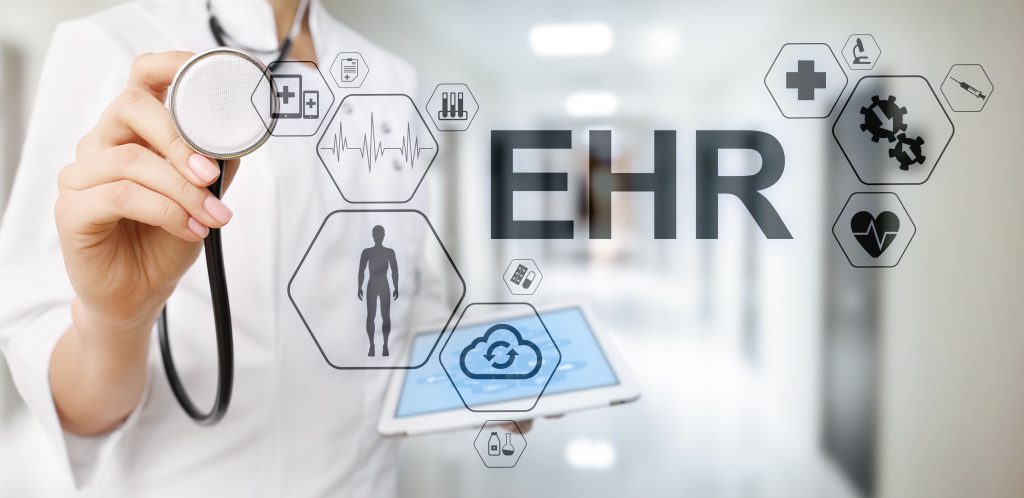- 24 April 2024
- by Andrej Fedek
- Blog, Business
- 0 Comments
A country’s healthcare system is often measured by its accessibility. A patient should be able to see a doctor despite mobility or financial constraints. Moreover, whether a patient chooses a private or public facility, the best healthcare outcomes should come naturally. However, in some instances, lack of interoperability hinders high-quality medical care. Critical medical records often fall through the cracks because of this challenge, leading to miscommunication, added costs, treatment delays, and life-threatening medical errors.
So, what is interoperability in healthcare? This blog aims to enrich your knowledge by discussing the challenges, advantages, and key healthcare interoperability solutions to make it better for everyone.
Healthcare Interoperability in a Nutshell
Healthcare interoperability is the key to seamless patient care. It encompasses a set of standards that enables various healthcare systems, infrastructure, devices, and software applications to connect, exchange data, and use that information in a coordinated manner. It’s about ensuring a smooth flow of information across the entire healthcare ecosystem—from hospitals and clinics to pharmacies, labs, and even wearable health devices.
Examples in Action: Interoperability Making a Difference
Real-world examples showcase the positive impact of improved interoperability:
· Remote monitoring of chronic conditions: Imagine a diabetic patient wearing a continuous glucose monitor that transmits health data directly to their doctor’s electronic health record or EHR system. This allows for real-time monitoring and adjustments to medication, leading to better disease management.
· Coordinating care for complex cases: For patients with multiple specialists, a unified view of their medical history across all providers facilitates a more coordinated care approach. This can significantly improve outcomes for patients with complex conditions.
So, how can we improve interoperability in healthcare and unlock the benefits of streamlined patient care? Continue reading to find out.
Strategies for Achieving Seamless Interoperability
In healthcare, seamless communication and data sharing are paramount. Providers must have access to an individual’s medical history when seeing a new doctor or transferring to another clinic or hospital.
Here are some suggestions for obtaining interoperability:
1. Adopt Industry Standards
One of the biggest hurdles to healthcare interoperability is the need for universal standards for data exchange. Different systems often use proprietary formats, making it difficult to share information seamlessly. By adopting industry-wide standards like HL7 (Health Level Seven) and FHIR (Fast Healthcare Interoperability Resources), healthcare providers can ensure that their systems speak the same language, facilitating smooth data integration and exchange. Organizational and structural interoperability play key roles in this aspect.
2. Leverage Cloud-Based Solutions
Cloud computing has revolutionized how data is stored and accessed across various industries, including healthcare. Transitioning to cloud-based EHR systems and other healthcare applications streamlines data sharing and enables real-time access to patient information from anywhere, at any time. This enhances collaboration among care teams, leading to better-informed decisions and improved patient outcomes. Cloud computing has transformed the healthcare landscape, facilitating seamless data management and access. Integrating cloud-based solutions like healthcare revenue intelligence enhances collaboration among care teams, fostering informed decision-making and ultimately improving patient outcomes.
3. Implement Application Programming Interfaces (APIs)
Besides EHR interoperability, APIs act as bridges between different systems, enabling them to communicate and exchange data effectively. Implementing well-designed and secure APIs establishes a standardized way for systems to interact with external applications and platforms. It fosters interoperability while maintaining data privacy and security.
4. Prioritize Data Governance and Quality
Healthcare interoperability is only as good as the data it relies on. Healthcare organizations must implement robust data governance policies and practices to ensure accurate and consistent information exchange. This includes standardizing data formats, establishing clear ownership and stewardship roles, and implementing rigorous data quality checks and validation processes.
5. Encourage Collaboration and Partnership
Improving healthcare interoperability requires a collaborative effort from all stakeholders, including:
- Healthcare providers
- Technology vendors
- Payers
- Regulatory bodies
Fostering partnerships and open communication lets the healthcare industry align its efforts, share best practices, and work towards common interoperability goals. This collaborative approach drives innovation, identifies and addresses interoperability challenges, and delivers better patient care.
6. Invest in Workforce Training
Technology plays a crucial role in enabling technical and semantic interoperability. It’s equally important to equip healthcare professionals with the necessary skills and knowledge to effectively leverage these integrated healthcare systems. Investing in workforce training programs focused on data management, system integration, and interoperability best practices ensures care coordination. It also guarantees that healthcare teams are well-prepared to navigate the complexities of interconnected healthcare ecosystems.
7. Leverage Patient Engagement and Education
Patients are at the center of the healthcare interoperability equation. Their involvement is essential for successful implementation. Educating patients about the benefits of interoperability fosters patient buy-in and encourages them to participate actively. This can include providing patients with artificial intelligence or AI-enabled tools to access and manage their health records and seeking their input on interoperability initiatives. For a deeper understanding, learn more about EHR interoperability which plays a crucial role in enabling seamless information exchange across healthcare systems.

The Advantages of Healthcare Interoperability
Interoperability provides several advantages for patients and everyone involved. It can also boost healthcare delivery in many ways:
· Improved patient care
Doctors can make more informed diagnoses and treatment plans. Imagine an allergist instantly accessing your medication list to avoid potentially life-threatening interactions.
· Reduced costs
Repeating tests due to inaccessible records wastes resources. Interoperability enables cost-effective care by eliminating redundancies.
· Enhanced patient engagement
You become more active in your care journey if you can easily access your health information. Secure patient portals can empower you to track medications, test results, and upcoming appointments.
· Better public health insights
Streamlined data sharing allows public health officials to identify and track disease outbreaks more effectively.
While the benefits are clear, achieving true interoperability is no small feat. Understanding the hurdles organizations face before exploring specific healthcare interoperability solutions is important.
The Roadblocks: What Hinders Interoperability?
Healthcare systems and structures vary and work differently in each setting. However, below are some of the most common healthcare interoperability challenges.
· Standardization issues
Different healthcare providers use various Electronic Health Record (EHR) systems, each with its data format and language. It’s like trying to converse where everyone speaks a different dialect!
· Data security concerns
Sharing sensitive patient records requires robust security protocols to protect patient privacy. Striking a balance between accessibility and data security is crucial.
· Financial constraints
Implementing and maintaining interoperable systems requires significant investment, a significant barrier for smaller healthcare organizations.
Prioritizing patient needs, investing in secure technology, and fostering collaboration, are keys to obtaining interoperability. These take time to address considering their complexity.
The Path to a Truly Seamless Patient Care
Improving interoperability in healthcare is a multifaceted endeavor, but the rewards are well worth the effort. Healthcare providers must break down data silos and enable seamless information exchange to deliver more coordinated, efficient, and patient-centric care.
Surpassing these challenges means reducing medical errors and improving service delivery—ensuring every patient receives the best possible care in the shortest possible time. It’s a future that’s not so distant if we strive to work together.

Andrej Fedek is the creator and the one-person owner of two blogs: InterCool Studio and HarmonyStart. As an experienced marketer, he is driven by turning leads into customers with White Hat SEO techniques. Besides being a boss, he is a real team player with a great sense of equality.






